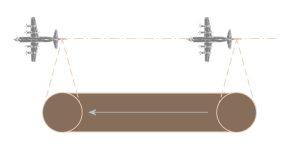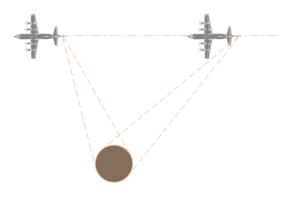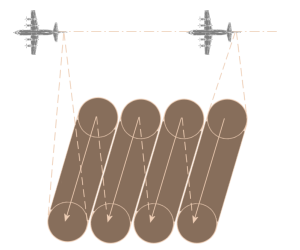Synthetic Aperture Radar Modes
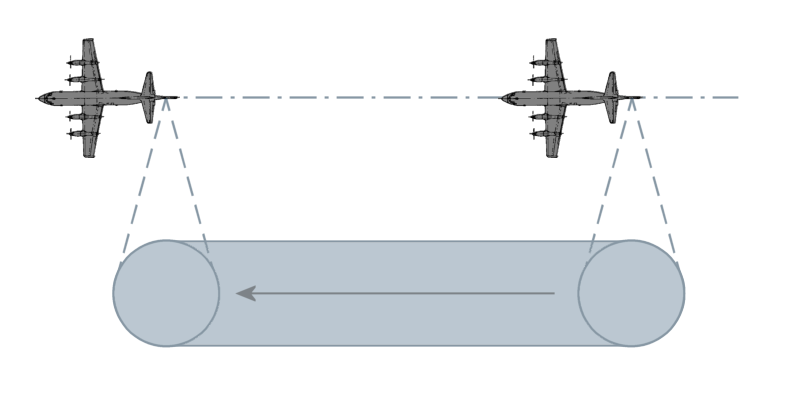
Figure 1: SAR-mode “Stripmap”
Synthetic Aperture Radar Modes
SAR-mode “Stripmap”
The conventional SAR strip mapping mode assumes a fixed pointing direction of the radar antenna broadside to the platform track. A strip map is an image formed in width by the swath of the SAR and follows the length contour of the flight line of the platform itself. A detailed description of this mode you'll find on the topic SLAR.
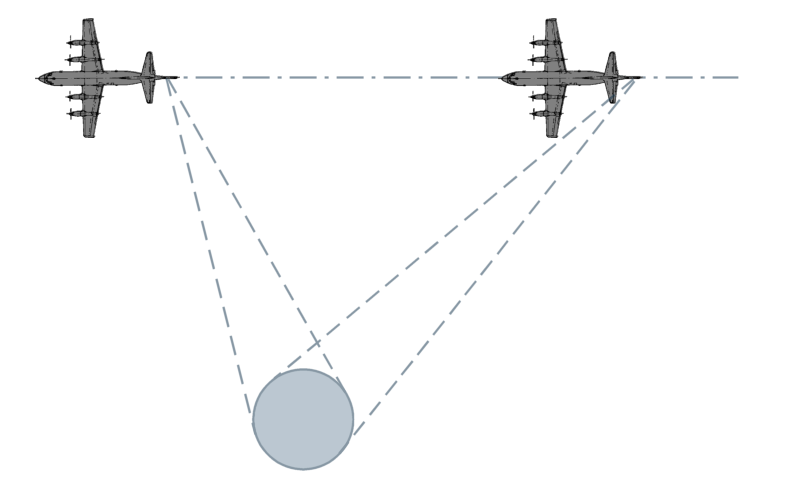
Figure 2: SAR-mode “Spotlight”
SAR-mode “Spotlight”
Spotlight-SAR is a mode of SAR operation for obtaining high-resolution by steering the radar beam to keep the target within the beam for a longer time and thus form a longer synthetic aperture. Spotlight SAR is capable of extending the high-resolution SAR imaging capability significantly. As more pulses are used, the azimuth resolution increases. This is achieved by keeping a target within the spotlight illumination of the radar beam for a longer time through electronic beam steering, resulting in a longer synthetic aperture. Spotlight SAR mode of operation is usually at the expense of spatial coverage, as other areas within a given accessibility swath of the SAR cannot be illuminated while the radar beam is spotlighting over a particular target area.
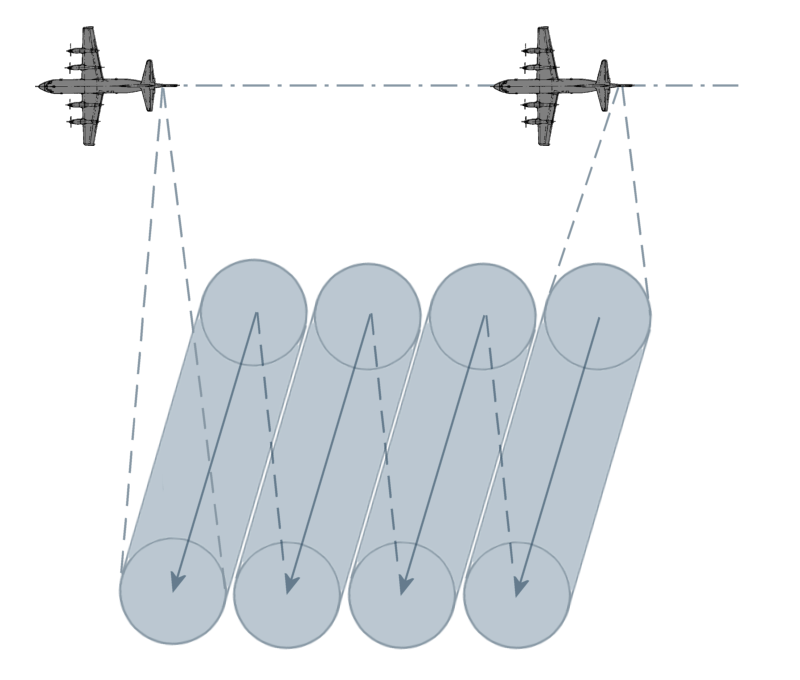
Figure 3: SAR-mode “Scan”
SAR-mode “Scan”
A synthetic aperture radar having the capability to illuminate several subswaths by scanning its antenna off-nadir into different positions. This is the SAR-mode “Scan”.

